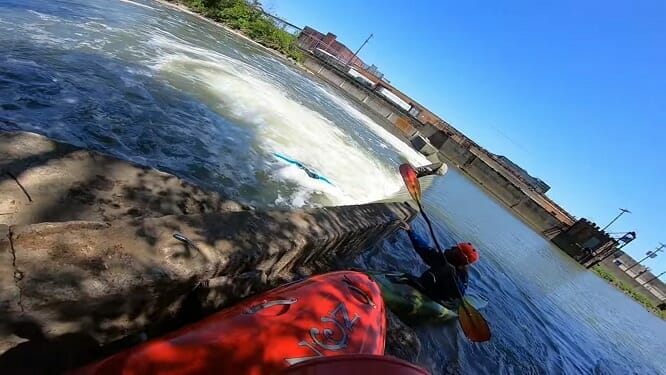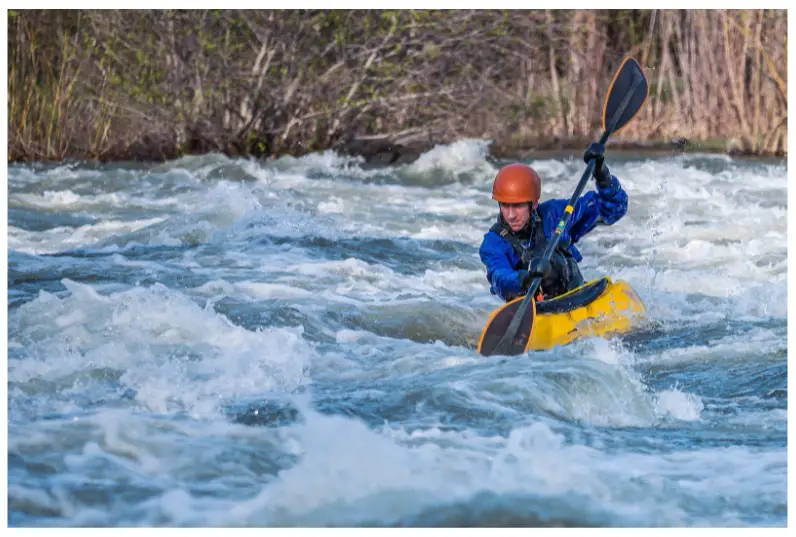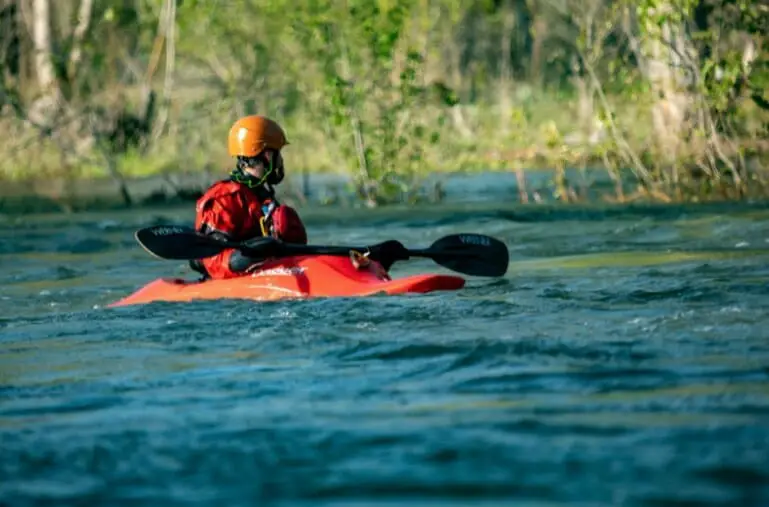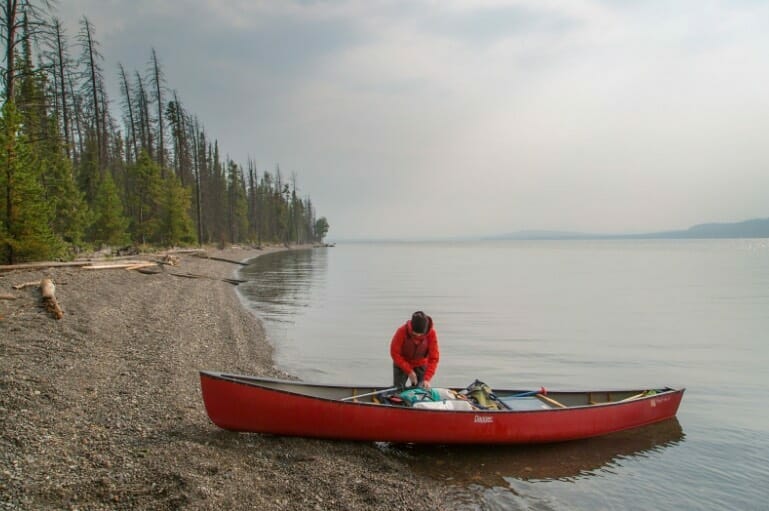What Should You Do When Approaching a Low-Head Dam in a Canoe or Kayak
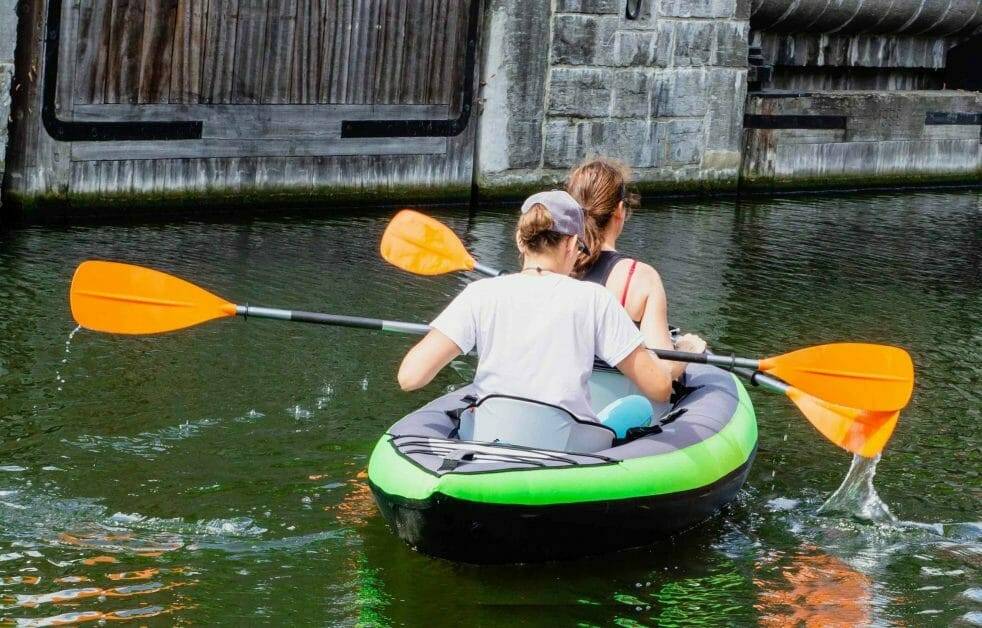
When Canoeing and kayaking there are several precautions you need to follow and several situations in which you must apply extreme caution.
Low-head dam threats can be just as deadly for kayaks as they are for boats, and accidents have happened on multiple occasions. You must be aware of the danger that low-head dams pose. Here you will learn about these issues as well as what should you do when approaching a low head dam in a canoe or kayak:
In general, when approaching a low head dam in a canoe or kayak there is no safe way to cross a low-head dam, and you should not try to go over it in any conditions. If you know where the dam is, identify it as a potential hazard, the safest and most effective option is to stay away from it.
What is a Low-Head Dam?
Low head dams are also known as run-of-river dams. They are artificial structures that consist of low-profile concrete walls that run the length of the river from one side to the other.
They differ from traditional dams because they do not rise above the water level. Instead, the wall is underneath and flush with the water’s surface, earning it the nickname “low-head.”
Low-profile barriers stop the canal partially rather than completely, raising water levels on one section of the river. When the water hits the wall, it can flow freely and falls to the lower level.
Despite their tiny size, dams are considered the deadliest of barriers for paddlers.
What are the Dangers for Paddlers to Low-Head Dams?
Difficult to Spot
Full-scale dams with gigantic spillway gates appear to be far more threatening, but you’re well aware of their presence.
On the other hand, low head dams can be practically undetectable in the appropriate circumstances. You won’t see a low-head dam until you’re already on top of one, whether you’re in a canoe or a kayak.
Canoe seats have a small edge in elevation and view. Kayakers sit lower on the water, compounding the situation.
As a result, understanding what to do when approaching low-head dam dangers should be immediate, as you may only have seconds to react.
Low-Head Dams are Usually Ignored
There is no official list of low-head dams in the United States, and all but a few states have failed to maintain warning notices.
Only three states – Pennsylvania, Illinois, and Virginia – publish rough estimates, and only three have legislative control over public safety at low-head dams. (1)
They’re usually not identified, and there are no warning signs because the law does not require it. You also won’t always be able to find them on a map.
You’re Up Against Some Powerful Currents
Many paddlers tend to underestimate or exaggerate their physical abilities to resist the powerful currents that swirl around low-head dams.
The dam’s size isn’t the problem here; the destructive strength of the circulating currents is.
The dam’s pressures can be so intense that they pull everything — debris, boats, and people – over the top and into the swirling stream below. There are large hydraulic forces and poor buoyancy there. (2, 3)
This is typically a deadly recipe for disaster that could prove fatal for anyone unfortunate enough to be caught.
There Will Be Much Floating Debris
Higher rainfall is often accompanied by debris, with branches and other solid items floating in the water.
So, in addition to fighting the currents, you must also defend yourself against debris, which raises your chances of becoming trapped and can result in serious injury.
You’re Possible to Get Caught Up in the “Boil”
The “boil” is a powerful, recirculating stream that occurs directly beneath the dam. It is the most dangerous force you will experience in a low-head dam. The water flowing over the dam’s face creates washing-machine-like turbulence that swallows everything and everyone in its course.
No matter how hard you struggle, you’ll be battered by the relentless hydraulic forces that draw you off the surface, drag you beneath, and press you against the dam’s wall.
It Is Difficult to Get Out of Low-Head Dams and Rescue is Hard
Even if you make it to the top, the constant barrage of water and swirling currents will drag you back down, and the nightmare will begin all over again.
Although we recommend life jackets, the highly aerated, turbulent waters of a low-head dam release enough water pressure to render them useless.
The most horrifying aspect is that once you’re inside, you’re entirely alone. Rescue at the Low-head Dam is nearly impossible, and many emergency crews end up becoming victims.
The Wisest Thing to Do When You’re Heading to a Low-Head Dam
It would help if you avoided them at all costs. You should avoid them like the plague.
Check Out the Local Waterways & Plan Your Trip
Doing your research before starting your kayaking expedition is the most excellent way to avoid coming into contact with a low-head dam. Consult maps of local waterways and other kayakers familiar with the area. Many states have low-head dam maps available online for this reason.
When you’re out on the river, it’s critical to keep your eyes and ears open for any warning indications that could show the presence of a low-head dam.
Maintain Your Distance
Despite preparedness, it is safe to keep your distance in a low-head dam.
Recognize the warning indicators as soon as possible so that you have the opportunity to respond while the waters are still calm. You should be able to make your trip to the nearest bank as long as you keep a safe distance from the low-head dam. For every paddler, this is the safest course of action.
As you draw near a low-head dam, steering your kayak or canoe gets more difficult — until the currents fully take control. Return upstream, away from the danger, before it’s too late. You should not attempt to cross it; instead, focus your efforts on making a safe distance.
Paddle to the Shore And Walk Your Canoe or Kayak
If you want to carry on your journey, the only safe option to pass a low-head dam is to paddle around it, avoiding danger.
Paddle to the beach and walk your canoe or kayak around the dam until you’re back in accessible waters. If you want to be extra cautious, move further down from the dam’s base. You may have to carry your boat all the way to land.
You need to avoid it since the “boil” can affect a vast area, and the streams can be deadly even at great distances from a low-head dam. Return to the water only if you’re sure the threat has disappeared.
It’s inconvenient – no one wants to lug a kayak or canoe about on their feet – but it’s preferable to the alternative.
Before ending this article, you may want to check out below our other kayak’s learning and product guides.
References
(1) legislative control – https://www.cambridge.org/core/journals/american-political-science-review/article/legislative-control-over-administration-congress-and-the-wpa/236681F20847A4B9C2609FE885F85C98
(2) hydraulic forces – https://www.grc.nasa.gov/www/k-12/WindTunnel/Activities/Pascals_principle.html
(3) buoyancy – https://www.britannica.com/science/buoyancy

